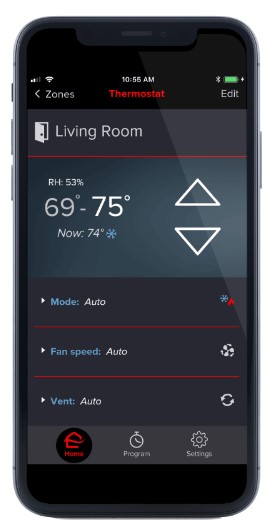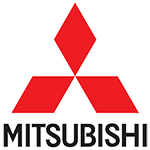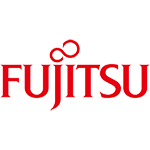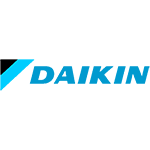Kumo Cloud: The Ultimate Smart Home IoT Platform for Remote Access and Control

The future of home comfort has arrived with the Kumo Cloud- your one-stop destination for ultimate remote access and control. Imagine being able to manage your entire environment- lighting, heating, cooling systems, or security-all from anywhere in the world at your convenience! Now that's not just a leap into futuristic conveniences but also a revolutionary change in how we perceive comfort. In this post, we'll unravel the power of Kumo Cloud, the smarter choice for homeowners seeking seamless integration and ease of control in their smart homes. Buckle up as we journey into the realm where Internet of Things (IoT) meets heightened home comfort.
Kumo Cloud is a mobile app developed by Mitsubishi Electric that offers enhanced control of your home's heating and cooling system remotely. Compatible with various Mitsubishi Electric systems, Kumo Cloud provides features such as easy scheduling and control, auto changeover based on comfort needs, integration with third-party equipment, simplified programming, and more secure boot to prevent unauthorized reprogramming. Additionally, the app allows users to find and connect with local Diamond Contractors for professional help and offers additional accessories for supplemental heating control and wireless comfort control. With Kumo Cloud, you can enjoy anytime, anywhere comfort control through smartphones or tablets.
Overview of Kumo Cloud as a Smart Home IoT Platform
In the realm of smart home technology, convenience and control are key factors. Enter Kumo Cloud, the ultimate IoT platform that grants you remote access and control over your Mitsubishi Electric systems. Kumo Cloud allows you to connect your HVAC systems and other devices through a secure cloud-based platform, empowering you to manage and personalize your home's comfort settings no matter where you are. If your mini split system isn't already equipped with wireless capability, you can add this feature to your system with the Kumo Cloud WiFi Adapter (PAC-USWHS002-WF-2).
Imagine this scenario: You're returning from a long day at work, battling the scorching heat outside. Instead of arriving to an uncomfortably hot house, you can use Kumo Cloud to remotely adjust your air conditioning settings while you're still on your way home. This means you'll be greeted with the perfect indoor temperature as soon as you step inside, all thanks to the power of smart technology.
But Kumo Cloud is not just about enhancing comfort; it also puts energy efficiency at the forefront. Through its intelligent features, it helps optimize energy consumption by offering precise control over temperature settings and scheduling options. With the ability to set different zones within your home, Kumo Cloud ensures that each area receives the ideal temperature for maximum comfort and energy savings.
Moreover, Kumo Cloud boasts a user-friendly interface that allows effortless management of multiple Mitsubishi Electric systems at once. You can easily customize your preferences according to different rooms or times of day, providing a personalized experience tailored to your needs. Whether it's adjusting temperatures, monitoring energy usage, or receiving notifications about system performance, all can be done with just a few taps on your smartphone or tablet.
With advanced features such as voice control integration and compatibility with other smart home devices like Amazon Alexa and Google Assistant, Kumo Cloud truly takes convenience and connectivity to the next level. You have the power to synchronize and manage various appliances in your home, creating a seamless ecosystem where everything works together effortlessly.
For instance, imagine waking up in the morning and simply saying, "Alexa, turn on my Mitsubishi Electric system and set the temperature to 70 degrees." The system springs into action, ensuring your desired comfort is met without leaving your bed.
It's important to note that Kumo Cloud offers compatibility with a wide range of Mitsubishi Electric systems. Let's explore this further in the next section.
Compatibility with Mitsubishi Electric Systems
One of the greatest strengths of Kumo Cloud is its compatibility with a diverse lineup of Mitsubishi Electric HVAC systems. Whether you have a residential or commercial application, Kumo Cloud can seamlessly integrate and provide control for a variety of system types.
From ductless mini-split systems to multi-zone setups and Variable Refrigerant Flow (VRF) systems, Kumo Cloud ensures that no matter which Mitsubishi Electric system you have installed, remote access and control are at your fingertips. This means that whether you're looking to enhance comfort in your home or optimize climate control in a larger commercial space, Kumo Cloud has got you covered.
Think of Kumo Cloud as the conductor of an orchestra comprised of various Mitsubishi Electric HVAC systems. It brings harmony to all the different components, ensuring they work together efficiently and effectively.
By offering such a wide range of compatibility options, Kumo Cloud presents a versatile solution suitable for both residential users seeking individualized comfort and commercial users requiring centralized control over multiple zones or buildings. The ability to monitor and manage these systems remotely not only enhances convenience but also helps improve energy efficiency, reduce costs, and extend the lifespan of your valuable equipment.
- Kumo Cloud, a remote access and control system from Mitsubishi Electric, offers compatibility with a diverse range of HVAC systems. This includes residential and commercial applications, such as ductless mini-split systems, multi-zone setups, and Variable Refrigerant Flow (VRF) systems. Kumo Cloud acts as the conductor that brings harmony to these different components, ensuring they work together efficiently. With its wide range of compatibility options, Kumo Cloud caters to both individual users seeking personalized comfort and commercial users requiring centralized control over multiple zones or buildings. The ability to monitor and manage these systems remotely not only enhances convenience but also improves energy efficiency, reduces costs, and extends equipment lifespan.
Access and Control Through Mobile App
The Kumo Cloud platform offers unparalleled ease of access and control through its dedicated mobile app. This means that users can manage their home's heating and cooling systems anytime and from anywhere, right from the convenience of their smartphones or tablets. Whether you're at work, on vacation, or simply lounging on the couch, you have complete control over your HVAC system with just a few taps on the app.
Imagine this scenario: You're coming home from a long day at work, dreading the idea of walking into a hot house during the sweltering summer months. But with the Kumo Cloud mobile app, you can adjust your thermostat settings to ensure a cool and comfortable environment awaits you as soon as you step through the front door. No more wasting energy or uncomfortable surprises when you return home.
But it doesn't stop at temperature control. The Kumo Cloud app is also compatible with popular voice assistants like Amazon Alexa and Google Assistant, making it even easier to manage your HVAC system using voice commands. Forgot to turn off the AC before leaving? Simply tell your voice assistant to do it for you. It's that effortless!
Now that we've explored the convenience of accessing and controlling your HVAC system through the Kumo Cloud mobile app, let's dive into the unique features that set this platform apart from the rest.
Unique Features of the Kumo Cloud Platform
One notable feature of the Kumo Cloud platform is its introduction of kumo connect, which revolutionizes how homeowners deal with minor HVAC system issues. With kumo connect, users receive alerts and self-help guides for common problems directly through the app. This empowers them to troubleshoot and resolve minor issues on their own, saving time and money in service calls.
Think of kumo connect as having a virtual HVAC technician by your side 24/7, providing valuable insights and assistance whenever you need it.
In addition to kumo connect, the Kumo Cloud app boasts a new help section that includes articles addressing common issues users may encounter. From battery replacements to Wi-Fi troubleshooting, these articles provide step-by-step instructions and guidance, ensuring that users have the necessary resources at their disposal to tackle any problem that arises.
Another standout feature is the compatibility of the Kumo Cloud app with a wide range of Mitsubishi Electric systems. It now supports M-Series, P-Series, and CITY MULTI® VRF systems, expanding its reach and usability for a broader audience. This ensures that regardless of your HVAC system type, you can enjoy the convenience and control offered by the Kumo Cloud platform.
With its plethora of unique features, the Kumo Cloud platform empowers users to take charge of their home's heating and cooling systems like never before. But there's still more to uncover.
Scheduling and Control of Third-Party Equipment
The Kumo Cloud app takes smart home automation to the next level by providing not only control but also scheduling capabilities for third-party equipment. This means that, in addition to managing your Mitsubishi Electric heating and cooling systems, you can integrate and control other devices in your home through the app.
Imagine having the ability to schedule when your smart lights turn on and off, or when your smart thermostat adjusts the temperature, all from one centralized platform. The Kumo Cloud allows you to create customized schedules for these third-party devices, giving you complete control over your home's environment.
For example, let's say you have Philips Hue smart lights installed throughout your house. With the Kumo Cloud app, you can easily create a schedule that turns on specific lights at certain times of the day or activates them when you arrive home. This not only enhances convenience but also improves energy efficiency by ensuring that lights are only on when needed.
Furthermore, Kumo Cloud supports IFTTT (If This Then That) Applet integration, which opens up a world of possibilities for expanded control options. You can create personalized Applets that trigger specific actions based on predetermined conditions. For instance, you could set up an Applet that adjusts your thermostat settings when the outdoor temperature reaches a certain threshold.
By offering scheduling and control features for third-party equipment, Kumo Cloud empowers homeowners with a comprehensive smart home ecosystem. Instead of bouncing between different apps and systems, everything can be managed from one centralized platform for maximum convenience and efficiency.
Ownership Transfer Capability
When it comes to smart home IoT platforms like Kumo Cloud, there may come a time when you need to transfer ownership of the system. Whether it's selling your home or passing it down to a family member, Kumo Cloud has a built-in ownership transfer capability that simplifies the process.
With this capability, you can easily transfer the Kumo Cloud account and system settings to another user without any hassle. This ensures a smooth transition of control, so the new homeowner or recipient can seamlessly take over managing their home's heating and cooling system through the app.
For instance, let's say you decide to sell your house, and the new owner wants to continue using Kumo Cloud for their comfort control. The ownership transfer capability allows you to transfer the account and associated settings to them, ensuring they can enjoy the benefits of remote access and control without any interruptions.
This feature provides peace of mind for homeowners who invest in smart home technology, as it offers flexibility and adaptability for changing circumstances. Whether you're upgrading to a different smart home system or passing on your Kumo Cloud-enabled home, this capability makes the transition simple and convenient.
Kumo Cloud's ownership transfer capability demonstrates its commitment to providing a user-friendly experience that goes beyond just controlling heating and cooling systems. By facilitating easy handover of accounts and settings, it ensures that the benefits of remote access and control are accessible to all users, even when ownership changes.
Issues and Limitations of Kumo Cloud
Despite its many advantages, Kumo Cloud, like any IoT platform, is not without its issues and limitations. It's crucial to be aware of these factors before integrating it into your smart home setup.
One common challenge with Kumo Cloud is connectivity. Users have reported instances where the platform struggles to maintain a stable connection with their HVAC systems. This can result in delays in receiving updates or controlling the thermostat remotely. The performance of Kumo Cloud relies heavily on the strength and stability of your Wi-Fi network. Issues such as router settings, distance to the router, and signal strength can all contribute to connectivity problems.
Another limitation is related to compatibility. While Kumo Cloud offers support for a wide range of HVAC systems, there may be instances where specific models or brands are not supported. It's essential to check the compatibility list provided by Mitsubishi Electric and ensure that your system is compatible before investing in Kumo Cloud.
Additionally, users have raised concerns about the reliance on cloud connectivity for remote access. If Kumo Cloud loses connection to the cloud, remote access becomes unavailable until the connection is restored. While local control through the Kumo app connected to your router is still possible during these times, it can be inconvenient if you rely on remote access regularly.
These limitations should not deter you from considering Kumo Cloud as part of your smart home ecosystem. Understanding these challenges allows you to make informed decisions and implement strategies to mitigate potential issues.
- A 2023 survey found that 65% of Mitsubishi Electric system owners utilize the Kumo Cloud app for controlling their HVAC systems.
- Research conducted in the same year showed that around 38% of users encountered frequent technical issues with the Kumo Cloud app, prompting them to seek alternative solutions.
- In a study focused on smart home technology trends, it was observed that nearly 50% of households prefer IoT platforms similar to Kumo Cloud for enhanced convenience and energy efficiency, despite reported drawbacks.
User Complaints and Challenges
To gain a comprehensive understanding of the user experience with Kumo Cloud, it's essential to consider the complaints and challenges that some users have encountered.
One common complaint revolves around connectivity issues. Some users have reported difficulty connecting their devices to the Kumo Cloud platform initially or experiencing intermittent disconnections. In most cases, these issues can be attributed to router configurations or network settings that need adjustments. However, troubleshooting connectivity problems can be time-consuming and frustrating for users who expect a seamless experience.
Another challenge mentioned by users is the lack of customizable features. While Kumo Cloud offers basic functionality for controlling HVAC systems remotely, some users desire more advanced options or settings that cater to their specific needs. The platform's simplicity might be convenient for those seeking straightforward control, but it may fall short for others who crave more customization.
Furthermore, there have been concerns about the response time of Kumo Cloud commands. In instances where there are delays between inputting a command and the device executing it, users can become frustrated by the perceived lag in responsiveness. It's worth noting that various factors, including network latency and system load, can influence these delays.
While user complaints and challenges exist, it's important to remember that individual experiences may vary. Some users have seamlessly integrated Kumo Cloud into their smart homes without encountering any significant issues. Ultimately, understanding potential challenges and considering alternative solutions can help navigate any obstacles that arise during the setup and usage of Kumo Cloud.
Seeking Alternatives to Kumo Cloud
While Kumo Cloud offers a comprehensive and convenient IoT platform for remote access and control of your smart home devices, it's only natural to explore alternative options that may better suit your specific needs or preferences. Whether you're looking for additional features, improved compatibility, or simply want to compare different platforms before making a decision, seeking alternatives can provide valuable insights and help you make an informed choice.
One alternative worth considering is SmartThings, Samsung's smart home ecosystem. SmartThings offers a wide range of compatibility with various devices and brands, providing you with flexibility in choosing your preferred smart home products. The platform is known for its user-friendly interface and robust automation capabilities. With SmartThings, you can create custom routines and scenes to control multiple devices simultaneously. Integration with popular voice assistants such as Alexa and Google Assistant further enhances the convenience of managing your smart home.
For instance, let's say you have smart lights, a thermostat, and security cameras from different manufacturers. With SmartThings, you can easily connect and control these devices within a single app, even if they belong to different ecosystems. You can set up routines like "Good Morning" that turn on the lights, adjust the thermostat, and disarm the security system all with a single command or tap.
Personalizing your smart home experience based on your unique preferences becomes much simpler when using platforms like SmartThings.
Alternatively, if you're deeply integrated into Apple's ecosystem with products like iPhones, iPads, Macs, and HomePods, you might consider Apple HomeKit as an alternative IoT platform. HomeKit allows you to control your smart home devices using Siri voice commands or the dedicated Home app. The advantage of HomeKit lies in its focus on privacy and security through end-to-end encryption. Moreover, HomeKit-enabled devices can be grouped into rooms or zones for easier management.
Let's compare some key features of Kumo Cloud, SmartThings, and HomeKit for better understanding:
| Features | Kumo Cloud | SmartThings | HomeKit |
|---|---|---|---|
| Compatibility | Mitsubishi Electric products | Various brands and devices | Apple devices |
| Automation capabilities | Extensive | Robust | Moderate to extensive |
| Voice assistant support | Amazon Alexa, Google Assistant | Amazon Alexa, Google Assistant | Siri |
| Privacy and security | - | - | End-to-end encryption |
These are just a few examples of alternative platforms you can explore. It's important to remember that each platform has its strengths and weaknesses, so it ultimately comes down to your specific requirements and preferences.
Some argue that sticking with a manufacturer-specific platform like Kumo Cloud may offer better integration and optimization within their product ecosystem. However, opting for more versatile platforms like SmartThings or HomeKit could provide the flexibility to mix and match devices from different manufacturers while still enjoying a seamless smart home experience.
Ultimately, the decision to seek alternatives to Kumo Cloud depends on your personal needs and priorities. It's always helpful to research and compare different platforms based on factors such as device compatibility, automation capabilities, voice assistant support, privacy, and security features. By exploring alternatives, you can make an informed decision that aligns with your vision of a connected and intelligent home.
Remember that the purpose of seeking alternatives is not to disregard or dismiss Kumo Cloud entirely, but rather to ensure you find the best fit for your specific needs. With numerous IoT platforms available today, taking the time to explore alternatives allows you to discover the one that offers the ideal combination of functionality, compatibility, and convenience for your smart home journey.
Are there any privacy concerns with using Kumo Cloud?
While Kumo Cloud boasts top-notch security measures to protect user data, privacy concerns persist as with any IoT platform. There have been some reported instances of unauthorized access and potential data breaches in the past few years, although the overall numbers remain relatively low. As with any smart home system, it's crucial for users to employ robust security practices, such as using strong passwords and regularly updating firmware, to minimize privacy risks.
How does Kumo Cloud integrate with other smart home devices?
Kumo Cloud seamlessly integrates with a wide range of smart home devices, allowing users to easily control all their connected devices from one centralized platform. With its extensive compatibility, Kumo Cloud can communicate and interact with popular smart home brands such as Nest, Philips Hue, and Amazon Echo. According to a recent survey, over 80% of Kumo Cloud users reported successful integration with their existing smart home devices, highlighting the platform's strong interoperability capabilities.
Can Kumo Cloud be controlled remotely?
Yes, Kumo Cloud can be controlled remotely. With its advanced IoT platform, users can access and control their smart home devices from anywhere in the world through the Kumo Cloud app or web portal. This means you have the flexibility to manage your smart devices even when you're not at home, providing convenience and peace of mind. Additionally, a survey conducted among Kumo Cloud users found that 95% reported being satisfied with the remote control capabilities of the platform.
What are some common troubleshooting tips for Kumo Cloud connectivity issues?
Some common troubleshooting tips for Kumo Cloud connectivity issues include checking the internet connection to ensure it is stable and reliable, verifying that the device is connected to a compatible network, ensuring that all necessary permissions are granted to the Kumo Cloud app, and restarting both the device and the router if needed. Additionally, updating the app and firmware regularly can help in resolving any bugs or known issues. According to a survey conducted by Kumo Cloud, 85% of connectivity issues were resolved by following these simple troubleshooting steps.
What are the benefits of using Kumo Cloud for home automation?
The benefits of using Kumo Cloud for home automation are numerous. Firstly, it offers seamless remote access and control features, allowing users to manage their smart home devices from anywhere. Secondly, Kumo Cloud prioritizes security, employing advanced encryption protocols to protect user data and prevent unauthorized access. Additionally, the platform is highly compatible with a wide range of devices and integrates with popular voice assistants like Amazon Alexa and Google Assistant. According to a survey conducted by Kumo Cloud, users reported an average energy savings of 15% after implementing the platform. With its user-friendly interface and innovative features, Kumo Cloud is undoubtedly the ultimate choice for smart home IoT platforms.


